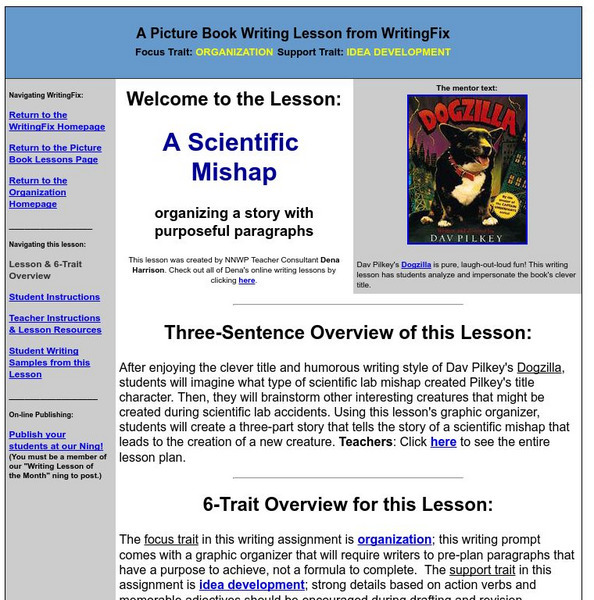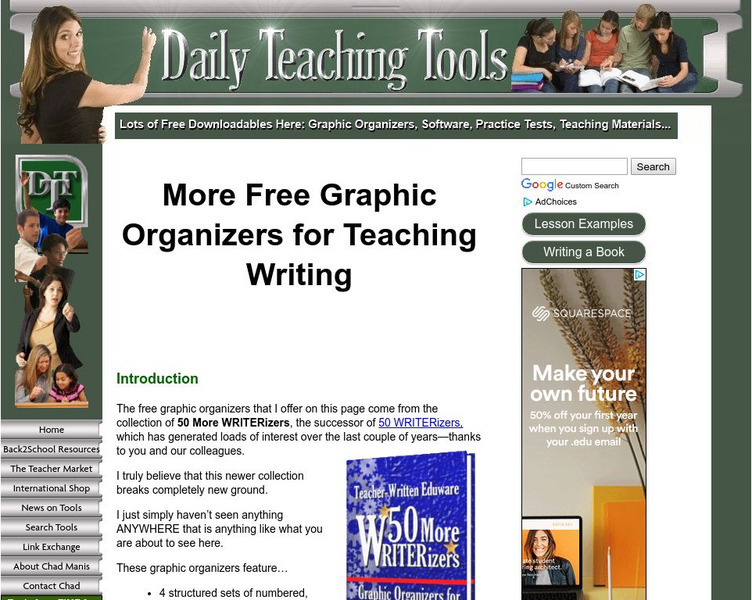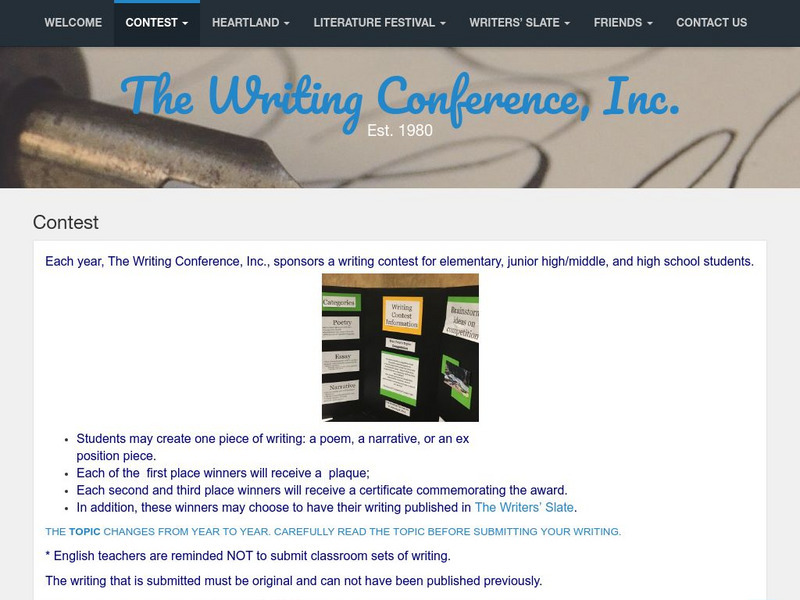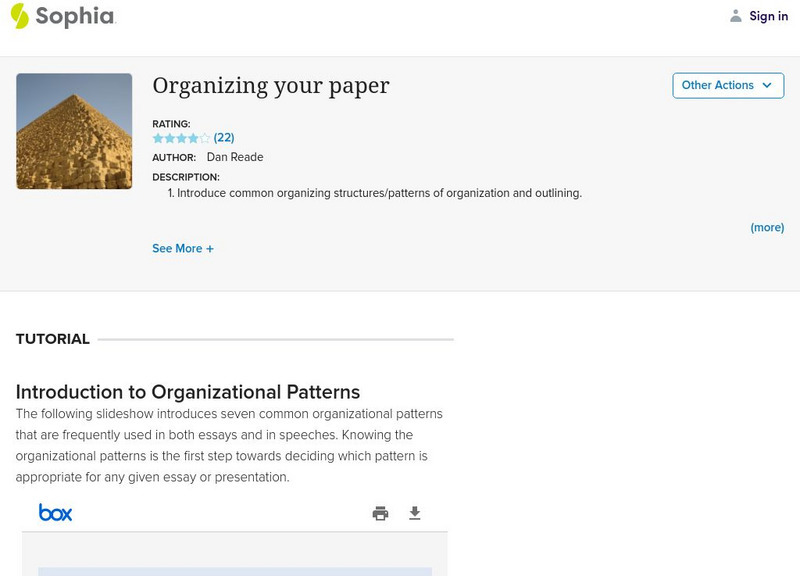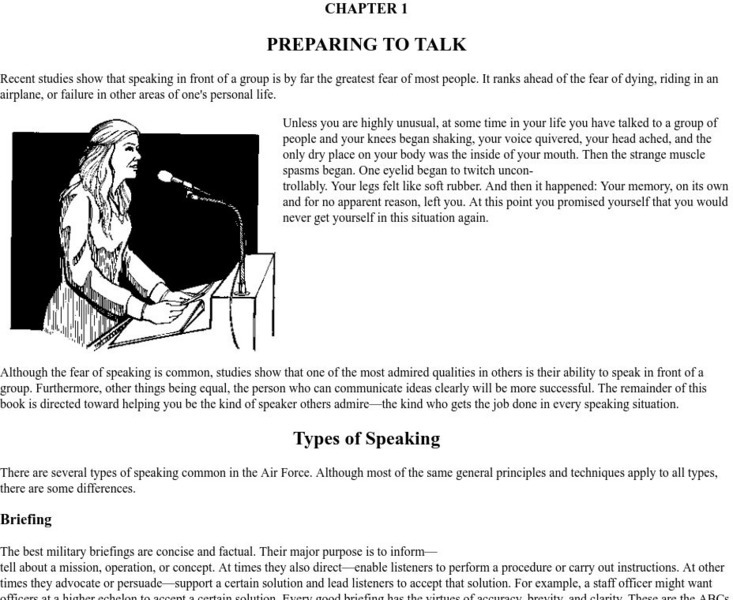AdLit
Ad lit.org: A Sample Rubric for Grading Student Writing
All written work should be assessed using a rubric. Using a set of criteria linked to standards not only allows for uniform evaluation, but helps students understand what is important about an assignment and encourages them to reflect on...
AdLit
Ad lit.org: Extended Writing to Learn Strategies
Writing enables students to process, organize, formulate, and extend their thinking about what they have been learning. In addition, teachers can also assign writing to help students evaluate what they know and understand about a topic....
AdLit
Ad lit.org: Teach the Elements of Writing
It's a misconception that writing teachers simply tell students to write and wait to see what happens. Teachers should provide instruction in and exposure to various elements of writing to help students understand what good writing is.
AdLit
Ad lit.org: Key Literacy Component: Writing
Students who don't write well aren't able to learn and communicate effectively. This article explains what good writing skills are and how to help struggling young writers gain those skills through proper instruction.
Writing Fix
Writing Fix: Organizing a Story With Purposeful Paragraphs
In this lesson, students organize and design a narrative based on three developing ideas.
Lumen Learning
Lumen: Boundless Communications: Conclusion
In this section of a textbook, students learn how to develop and facilitate an effective closing to a speech. It includes links to the following topics: the role of a conclusion, summarizing ideas, and signaling the end of the speech and...
Cambridge Rindge & Latin School
Cambridge Rindge & Latin School: Making an Outline
A tip sheet on how to create and outline for a research paper.
Grammarly
Grammarly Handbook: Writing a Draft
This page focuses on writing a first draft including getting all the information down in an organized manner without worrying about the grammar and mechanics. It discusses the advantages of using word processing programs which make it...
Other
Uncg University Speaking Center: Parts of a Speech [Pdf]
This site provides public speaking tips. Advice and examples for writing the introduction and conclusion are highlighted. The tips could also be used to help in preparing for group discussion.
Bryn Mawr College
Bryn Mawr College: Suggestions for Organizing and Writing Papers
This writing lab tutorial offers sound principles for writing papers, beginning with knowing your audience and objective. It covers patterns of organization, outlining, illustrations, writing, abstract, citations, and style.
Grammarly
Grammarly Handbook: Organization and Development
A list of five focuses in the areas of organization and development. Links to each focus area are provided.
Other
Univ. Of Washington: How to Make an Outline [Pdf]
Information on how to make an outline. Provides a sample.
Daily Teaching Tools
Daily Teaching Tools: Project Exposition
This lesson engages students in expository writing. Four graphic organizers are provided to assist students in the expository writing process.
Daily Teaching Tools
Daily Teaching Tools: Graphic Organizers for Teaching Writing
This Daily Teaching Tools collection provides graphic organizers for writing. Elaborate graphic organizers for the following areas are provided: persuasive essays, expository essays, paragraph writing, fiction pieces, narrative writing,...
Grammarly
Grammarly Handbook: Organizing and Developing Your Ideas
A list of four important parts of a writing project with links to additional information on each.
TES Global
Tes: Assessing Pupil Progress in English: Writing
[Free Registration/Login Required] This PowerPoint provides exemplar pieces to guide students to understand how to revise a standardized, on-demand writing assessment piece.
Other
The Writing Conference, Inc.: Writing Contest
This site explains the basics for the writing contest, which is open to all students. There are contests in poetry, narration, and exposition. The topic is the same for all three forms and links are provided for the judging criteria.
Grammarly
Grammarly Blog: Avoid Unnecessary Construction and Prepositions
This page focuses on the need for clear and concise language when writing.
Sophia Learning
Sophia: Determining Your Audience
On this website you will find information, two presentations, and a practice worksheet explaining how to decide the audience of a written piece and how to appeal to an intended or general audience in an original text....
Sophia Learning
Sophia: Organizing Your Paper
Two slideshows and a screencast on organizational patterns used when writing essays and speeches. The first is a 20-slide presentation explaining the seven most common organizational patterns used in writing: time sequence, spatial,...
Other
Kim's Korner: Definitions: Purposes for the Modes of Writing
What are the modes of writing? Use this site that details the different types of writing.
Other
Air War College: Speaking Effectively: Preparing to Talk
Use tips from this experienced speaker to help you get through the jitters of public speaking. Explains how to assess your audience and adapt your presentation, how to choose a focus, and how to establish your purpose.
University of Missouri
University of Missouri: Clear Writing: Ten Principles of Clear Statement
This page features a list of ten principles that lead to writing clearly and concisely, such as avoiding unnecessary words, writing like you talk, writing to express and not to impress, and the like. It also discusses "fog indexes" to...
Capital Community College Foundation
Guide to Grammar and Writing: Sense of Purpose
Not only does this site from Capital College Community Foundation give you a fine explanation of writing purpose and how to identify yours, it also provides good examples of how to develop that purpose in a piece of writing. W.9-10.4...




